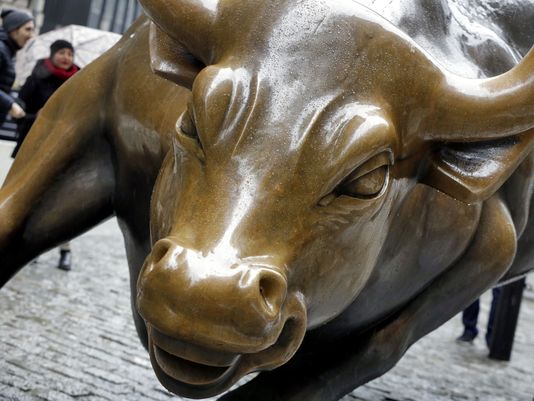
The key to investing success in 2019 is remembering that “V” is for victory.
December was wretched for stocks, but it’s over. As I detailed last week , stocks always bounce after extreme nasty stretches. And they do so in a near-perfect V-shaped pattern, it’s merely a question of when. You’ve survived the left side of a V: the terrifying slide. Soon stocks will rocket up the V’s right side, if they haven’t already started.
So let’s talk about the V’s left side. Last week, I said December’s market action seemed like “mass forced institutional liquidations” – shuttering hedge funds scrambling for cash by year end. There isn’t good data on this, but hundreds of hedge funds closed Dec. 31 after botching three straight years. Most were bearish in 2016 and 2017, fearing Trumpageddon. They lagged terribly as U.S. stocks rose 36.4 percent. Then they reversed in 2018, swinging uber-bullish, and getting hammered as stocks fell after September.
The hedge fund business model makes these long, lagging stretches challenging to recover from. The funds are paid largely through a 20 percent fee on any gains above some contractually detailed “high-water mark” in the value of the investments. That mark doesn’t ever reset when asset values fall. If they get too far underwater and can’t get back above it before long, continuing isn’t worthwhile. Their self-interest becomes closing shop and starting fresh later. Hence this year’s unusual stampede for liquidating cash by year end.
Then, too, most hedge funds let their investors leave only at contractually specified periods. So many surviving funds likely felt forced to raise cash, anticipating disappointed investors fleeing right about now, when redemption windows open. The result: Mass December selling, which prioritized speed over price. Imagine hundreds of folks in a one-door room. One yells “FIRE!” They all start stampeding together. That was most of December.
They seemingly were largely done liquidating by Dec. 26, when stocks rose 5 percent. That may have reflected others who earlier, expecting more of the same, had sold short (selling un-owned, borrowed shares) to profit from expected further declines but got pinched by the rebound. If so, the V’s right side is likely underway now.
Last year reminds me of 2011. Few recall, but stocks had a full-scale 2011 correction from May to October. Using closing prices, the Standard & Poor’s 500 fell 19.4 percent. Bear market dread abounded that October, like now. Then came the V. By Feb. 24, 2012, stocks hit new highs, after a 24.2 percent rise. Now 2011’s correction is largely long forgotten.
This time, starting in October, the S&P 500 fell 19.8 percent from peak to trough (using closing prices). That’s almost big enough for a bear market (a 20 percent fall). Absent another big downdraft, it was a big 2011-like correction. Many will forget it – like most have long forgotten this bull market’s prior five global corrections. They’re painful in the short term but fade fast from memory, making them blips on a chart. The aftermath is always the V’s right side – a big rebound.
Before I got promoted in 2017 to USA TODAY, I wrote columns for Forbes for 32½ years. My Jan. 29 and Oct. 15 2009, columns detailed exactly how the V would work following that biggest, ugliest bear market since the Great Depression. Read “Anticipate the V” and “Viva The V” .
So believe in the V. Own stocks! The stock market is amazingly resilient, and always will be, because humanity is resilient. Don’t bet against us.




























